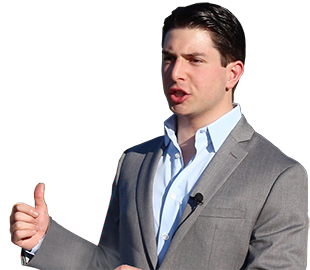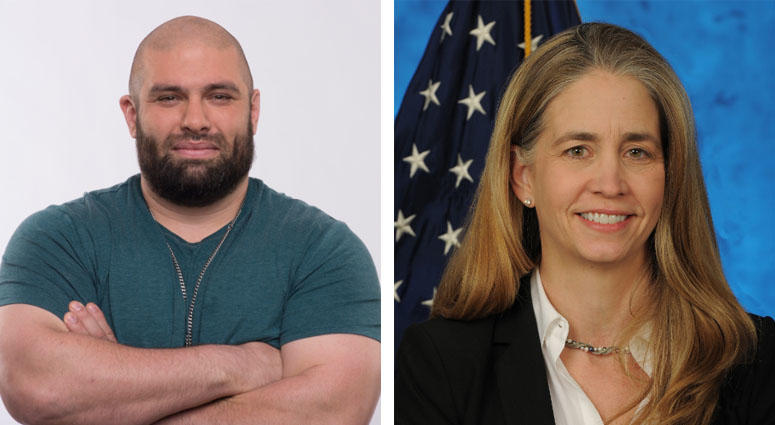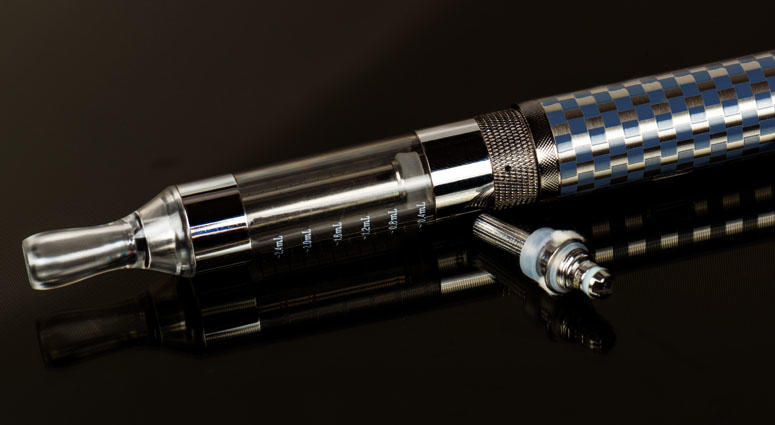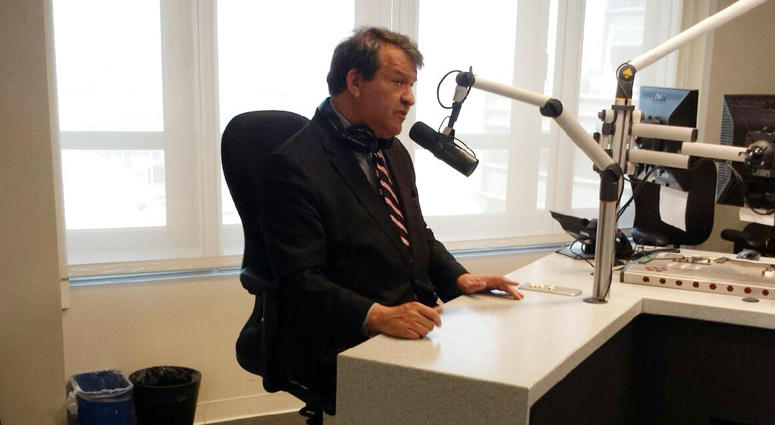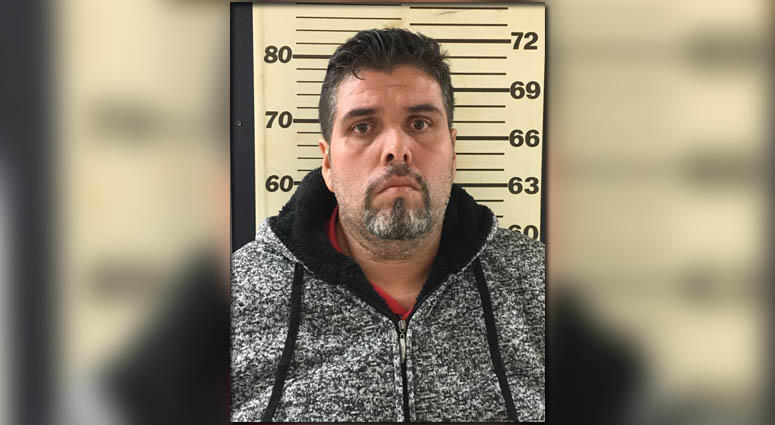
-
The New Wave: Surge Of Women Running For Office
Post Views: 1,495NEW YORK (WCBS 880) — The midterm congressional primaries are kicking into full gear and there is a tidal wave of female candidates running for office this year.
Although filing deadlines have yet to pass in every state, the country is already seeing a record number of women running for Congress. Many women are also on the ground in gubernatorial races, as well as some state legislative and municipal elections.
“We’re looking at close to double the number of women who ran in previous record years,” said Debbie Walsh, director of the Center for American Women in Politics at Rutgers. “When we look at the U.S. Senate, the U.S. House and statewide elected offices we’re at over 700 women who are running for office. We’re really seeing a huge increase in the U.S. House.”
Many believe the 2016 presidential election is responsible for inspiring women to run.
“So many people got engaged in that election whether they were pro-Trump or pro-Hillary and they got off the sidelines and started volunteering and talking about politics,” said Mendham Township Committeewoman Amalia Duarte. “I think right now it’s wonderful because women need to be represented, we need to be at the table otherwise we’re on the menu, or so goes the quote. I’m hoping that women continue to be engaged, continue to run and continue to stay involved in politics because it’s important. These are our lives.”
Walsh credits President Donald Trump.
“I think a piece of it was the defeat of Hillary Clinton, I think a larger part of that though is the election of Donald Trump,” Walsh said. “I think for a lot of women they thought that when the Access Hollywood tape came out that he couldn’t possibly win, that it would be disqualifying for anyone to get elected president of the United States who openly talked about sexually assaulting women.”
Montclair State University Political Science and Law Professor Brigid Harrison agrees.
“We can’t deny the influence that President Trump’s incendiary rhetoric has had,” Harrison said. “It has really ticked some women off and really made them mobilized and compelled to do something on a very personal level.”
But Walsh thinks it goes beyond sexism.
“I think it went also to the actual policies that women care about and feeling like some of the things that they were concerned about — issues like health care and the environment — were really in jeopardy and that they needed to have a voice of their own,” Walsh said. “It was a real kind of clarion call about the fact that elections have real consquences and that women really felt that they had to find a way to have their own power, their own voice and to be able to exercise their power in the electoral system and I think all of that has led to women being more engaged.”
Roughly three-quarters of the congressional female candidates are Democrats.
“There needs to be more done on the Republican side because political parity will not be achieved in this country on the back of one political party, both parties have to have a commitment to that,” Walsh said.
But it’s not just Democrats.
“On the Republican side, you are seeing some Republican women saying, ‘You know what, this is not my party. This is not what I believe in. I’m not a Democrat but this does not represent how I see the future of my party and so I’m going to do something abnout it,'” Harrison said.
Republican Chele Chiavacci Farley, who is challenging U.S. Sen. Kirsten Gillibrand, said she’s been traveling the state and speaking to people told her they’re appalled and disappointed at the general chaos they see in Washington.
“There’s obstruction on both sides of the aisle and they’ve lost faith in their government leaders,” Farley said.
Over the coming weeks, WCBS Newsradio 880 will examine the challenges women have faced, what it will take to achieve parity and how the political landscape is changing.
Neil A. Carousso produced WCBS Newsradio 880 reporter Peter Haskell’s multi-platform series titled “The New Wave: Women in Politics.” See the video piece of this first installment here.
-
Campaign Urges Veterans To Get Mental Health Care If They Need It
Post Views: 1,256NEW YORK (WCBS 880) — May is Mental Health Awareness Month, and the U.S. Department of Veterans Affairs has launched a campaign to urge veterans to get help for if they need it.
The campaign is called “Mental Health Means a Stronger You.” It aims to reshape the perceptions and treatment by outlining the success stories of vets who have reached out for mental health support.
WCBS 880 Producer Neil A. Carousso talked about the campaign this week with Marine Corps veteran Moses Maddox – now veterans retention counselor at California State University San Marcos – and Dr. Wendy Tenhula, director of innovation and collaboration at the U.S. Department of Veterans Affairs.
It is part of the “Make a Connection” program, the VA’s ongoing national mental health outreach effort.
“While the conversation for mental health has gotten better, there’s still this stigma that, you know, either you’re weak or you’re crazy – a variety of things that people say when it comes to seeking, you know, mental health, that frankly just aren’t true, and that treatment is something that should be thought out, and that recovery can be achieved as long as you take your treatment seriously and as long as you actually go out there and seek that help,” Maddox said.
Maddox said some veterans might not seek out mental health care because of the stigma, some are concerned that it might limit their employment opportunities, and some don’t want to admit they need help because they feel like they can go through anything after having gone to war.
“And then they come home, and something as simple as a college class is extremely difficult because they’re cycling through things,” Maddox said. “So there’s a variety of reasons why people don’t go seek help, and this movement that we’re trying to do; this message is to say, ‘Hey, OK, people have been there before. We’ve gone through it. You’re not alone. Don’t be afraid to open yourself up and get that help.”
Tenhula said the “Make a Connection” program was launched a few years ago “to raise awareness about mental health conditions and to inform veterans, as well as their family members and other loved ones, as well as their country at large, that mental health conditions are treatable.”
She said hundreds of veterans have come forward and talked about their own difficulties, the treatments they have received, and how those treatments have made a difference.
“There are effective treatments available, and that recovery is possible,” Tenhula said.
Maddox said there are many factors that go into an effective mental health care treatment program.
“One is having a really good counselor who is very honest about the process; who told me that some days are going to be better than others; that there’s going to be sessions where I might leave the session feeling worse than when I started, but it was all part of the process,” he said.
He added that the first step is just to get help and understand that doing so can be scary and stressful – particularly since a therapist will start out as a stranger to whom a veteran is assigned.
“But keep in mind that it is OK; that it is a process, and you have to stick with it. There’s going to be days where it’s incredibly difficult. There’s going to be times when it’s going to be hard to go out of bed, and there’s always an excuse; a reason not to go. You have to not listen to that,” Maddox said. “Once you take that first step, you have to follow through, and those stressors tend to go away once you get comfortable with the process; once you start to see little incremental changes.”
The VA has also expanded the methods veterans can use to access mental health care, Tenhula said
“We’ve expanded the use of telehealth for mental health conditions, so a veteran can be in one location, and their doctor or therapist can be in another location, and they can work together using video conferencing technology. VA also has a number of mental health-related mobile phone apps,” she said.
Maddox’s message for other veterans was that he has an idea of what they’re going through – and he said veterans like openness, honesty, and frankness.
“It’s natural. But you’re not weak for going to seek out mental health treatment, and in fact, saying that I do need help is a great sign of strength, and that’s what we really encourage,” Maddox said.
-
E-Cigarettes Pose Plenty Of Their Own Risks, Expert Says
Post Views: 1,908MIDDLESEX, N.J. (WCBS 880) — The health risks of cigarettes are well-known, and now the new trend among teens is vaping – using e-cigarettes that contain nicotine and other chemicals.
E-cigarettes employ liquid chemicals turn into a vapor that people inhale, and many are now warning that they have plenty of their own risks – particularly for teenagers.
E-cigarette manufacturer JUUL says it will spend $30 million to keep its products away from underage users, just as the Food and Drug Administration announced a crackdown of underage use of vaping devices.
Dr. Indra Cidambi is a leading addiction expert and the founder of the Center for Network Therapy – New Jersey’s first state-licensed ambulatory detoxification treatment facility. She told WCBS 880 Producer Neil A. Carousso that the push JUUL is not a victory in any way.
“It’s not at all, because this understanding; this belief, I would say, that e-cigarettes are safer – it is not. Nicotine is highly addictive, and it can prime the brain’s reward system for addiction to other drugs. So e-cigarettes to graduating to the use of other drugs is quite possible,” she said. “So if you really look at the statistics, it says one in four teenagers who reported e-cigarette use eventually progressed to smoking pot; smoking marijuana, as compared to one in 12 of teenagers who did not use e-cigarettes.”
Cidambi also noted that some teens are “dripping,” that is, pulling an e-cigarette apart and placing e-liquid drops that contain nicotine and flavoring agents directly onto the heated coil while inhaling quickly. The practice creates a thicker vapor, enhances the flavor, and creates a stronger “throat hit” – the pleasurable sensation that that inhaling the vapor brings about in the throat.
“We need to look more into this,” she said. “The dripping is really bad.”
Cidambi said some e-cigarettes can deliver 20 times the nicotine of one cigarette. She explained that the nicotine goes into the bloodstream and stimulates the adrenal gland – a process that in turn releases epinephrine. The epinephrine stimulates the central nervous system and increases blood pressure, the heart rate, and the rate of breathing.
The stimulation also results in an increase of dopamine, which goes to the brain’s reward system. The reward system is also stimulated by food, sex, and other drugs.
“Once that gets triggered, the plain old addictive cycle starts out,” Cidambi said.
Cidambi also said even among adult users, many are switching from regular cigarettes to e-cigarettes – but are not using them as a tool to stop altogether.
“It’s not like, ‘I used e-cigarettes for a little bit and got off the thing’ – no, not at all. Instead of cigarettes, now they’re smoking e-cigarettes. That’s the only positive thing that we can say,” she said.
But e-cigarettes have their own health risk, Cidambi emphasized. Their vapor has been found to contain some carcinogens, and some brands contain high levels of metals such as nickel and chromium that are “not healthy,” she said.
In dripping, low levels of cadmium are also involved and can cause breathing problems, she said.
“I don’t think this is in the right direction – like, we shouldn’t promoting any of these. Smoking is bad, you know,” Cidambi said. “Leading a healthy life is important.”
Meanwhile, Harvard Medical School recently published data showing that nicotine poisoning from e-liquid has skyrocketed. Between the flavoring and attractive packaging, there has been a 1,500 percent increase in accidental ingestions of e-liquid among toddlers and young children over the past three years, the study said.
Cidambi said rationalizing that e-cigarettes are relatively safer than regular cigarettes is the wrong road to go down.
“It’s disheartening to see how our culture is changing now. Our community is accepting those ideas – started comparing all the time what you hear from people who are smoking, they would always say, ‘Smoking weed is not as bad as alcohol use,’ so it’s always a comparison. And, ‘Oh, e-cigarettes are better than cigarettes,’” she said. “So it’s the same – ‘This is not as bad as that.’ That’s not a good comparison. I always say to my patients, ‘Why don’t you compare yourself to people being totally abstinent and not using anything?’ And then they just keep quiet.”
Cidambi also emphasized that pregnant women should not be using e-cigarettes or smoking anything at all, and prescription medications also may be risky for pregnant women.
-
After 100 Days In Office, Westchester County Executive Says Budget Is Top Concern
Post Views: 1,349NEW YORK (WCBS 880) — George Latimer is marking 100 days in office as Westchester County Executive.
The Democrat was elected last fall, unseating two-time popular incumbent Republican Rob Astorino. Latimer is a lifetime Westchester resident — born in Mount Vernon, a product of public schools, and a graduate of Fordham in the Bronx. He was a marketing executive for two decades before jumping into politics. He has served in various roles in city, county and state government along the way, and he has never lost an election.
He ran for county executive on promises to hold the line on taxes, fight to preserve the environment, build up urban centers, increase opportunities for minorities and women in business, and increase investment in mental health and fight the opioid crisis.
During an appearance Wednesday morning on WCBS Newsradio 880, Latimer told Wayne Cabot and Paul Murnane that the budget is a top concern.
A full audit is underway, but an early look shows the county has a budget gap that will likely grow.
“The state comptroller came in to the fiscal review, identified that some revenues were overestimated — sales tax, state aide. And we know already that we have a major union contract that’s gone seven years unresolved and that’s accumulating a pretty hefty prospective charge if we’re able to close it off,” Latimer said.
The county executive said he’ll try to encourage villages to share some services as a way to cut costs.
“What we have to do at the county level is try to give them incentives to combine or work with the county on the delivery of services,” Latimer said. “We’re obviously concerned about how can identify shared services, ways of restructuring how we deliver shared services — police, sanitation — things that we’ve come to understand can be done by every local municipality but now we have to look at doing them in some combination of delivery.”
A caller also expressed concerns about what will happen to the communities that stand to lose revenue when the Indian Point Nuclear Plant closes in the coming years.
Latimer said the goal is to repurpose the land that the plant sits on.
“Part of it is going to always remain to house the spent fuel rods but the rest of the land sits on the Hudson and if it can be repurposed productively, and that’s open-ended. That’s a question economic development and how we incentivize that,” Latimer said.
He favors creating an enterprise zone “where we can give some special tax discounts that would allow us to bring something else into that land.”
“I don’t know that you’re going to get the same economic boon that you had with Indian Point but I think we can help offset it until the economy restructures itself in that area,” Latimer said.
The county executive also addressed a question from a caller who asked why a new Westchester County police commissioner has yet to be appointed.
“We haven’t found the right person yet,” Latimer said. “Public safety is an important position and we want to make sure we make the right decision. We’re not into hiring and firing and rehiring.”
Another caller asked Latimer about lighting on the Bronx River Parkway.
“All the lights on the parkway work in the Bronx section but none of them seem to work on the Westchester side,” the caller said.
The issue comes down to money. The project has to be funded through the capital budget.
“Everybody says,. ‘Well let’s keep our taxes low, don’t spend anymore money, don’t raise my taxces,’ but there are capital needs,” Latimer said.
The county executive doewsn’t sound optimistic this will happen anytime soon.
“I hope by the time I say goodbye in this position both he and I will be able to drive the Bronx River fully lit,” Latimer said.
Neil A. Carousso produced WCBS Newsradio 880’s live-to-tape interview on the WCBS Opening Bell Report on Wednesday, April 11, 2018.
-
Prosecutor: Mexican Drug King, Alleged Underlings Brought Enough Fentanyl Into NYC To Kill Millions
Post Views: 1,290NEW YORK (WCBS 880) — A Mexican drug kingpin and five others were indicted Tuesday in an alleged drug smuggling conspiracy, which authorities said brought enough fentanyl into New York City to kill 10 million people.
In the indictment filed by the New York City Office of the Special Narcotics Prosecutor, Francisco Quiroz-Zamora, 41 – also known as “Gordo” – was charged with operating as a major trafficker, conspiracy, and criminal sale of a controlled substance.
An indictment alleged Quiroz-Zamora, of the Sinaloa Cartel, was the Mexican-based source of a recent large shipments of fentanyl to New York City, and alleged that
A resident of San José del Cabo, Mexico, Quiroz-Zamora allegedly arranged for narcotics to be smuggled from Mexico to Arizona and California on trucks and cars and with drug couriers. He allegedly communicated directly with New York City drug customers, and arranged for members of his trafficking network to conduct drug deals, prosecutors said.
“Kingpin or major trafficker charges carry a life sentence, and that’s important because he had direct dealings from Mexico with a distribution network in New York City and with an undercover officer, and he was responsible for sending to New York City at least 50 pounds of fentanyl, which is charged in the indictment,” New York City Special Prosecutor Bridget Brennan told WCBS 880 Producer Neil A. Carousso. “And you know, fentanyl is so deadly. It’s viewed to be responsible for what will probably turn out to be a record-breaking number of overdose deaths here in New York City in 2017.”
Quiroz-Zamaroa was charged in connection with a bust that netted 44 pounds of fentanyl at the Umbrella Hotel in the Bronx on June 19 of last year, and on Central Park West on Aug. 4 of last year, prosecutors said.
He received about $22,500 from an undercover officer through a Western Union wire transfer, and came to New York City on Nov. 27 of last year to collect more money from the undercover officer, prosecutors said. But agents tracked Quiroz-Zamora’s movements as he took a circuitous route from Texas to Connecticut by plane, down to Delaware, and then to New York on an Amtrak train, prosecutors said.
Quiroz-Zamora was arrested at Penn Station on Nov. 27 and was originally charged in a complaint in Manhattan Criminal Court. He has been in custody since Nov. 29.
Prosecutors said they also busted a stash house on Central Park West at 105th Street, which was receiving the drugs that were being supplied by the defendants.
“What we found there was it was basically a packaging location; that the people inside that location were packaging many, many thousands of little glassines that were being filled with fentanyl or heroin, and some kind of other substance, and then ultimately, the stuff was headed for street distribution, and that was in a lovely Central Park West apartment with many other people living inside, and when you think about it, it’s a very dangerous situation,” Brennan said.
Five other defendants were also charged in the indictment. Prosecutors alleged that Carlos Ramirez, 27, of Colorado, was caught in a bust with an undercover officer; Jesus Perez-Cabral, 20, maintained the Central Park West drug stash along with Johnny Beltrez, 33; David Rodriguez, 32, was seen carrying suspected narcotics into a car outside the Central Park West building; and Richard Rodriguez, 43, was an Uber driver who drove off with the drugs.
Brennan emphasized that her office is cracking down on fentanyl, with overdoses having reached an all-time high of 1,400 deaths in 2017. Seizures also spiked by a factor of more than 12, from 35 pounds in 2016 to 491 in 2017.
Brennan explained that fentanyl is about 50 times more potent than heroin, and is also cheaper to wholesalers – making dealing in it an attractive proposition for drug traffickers.
“Because it’s a synthetic drug, it’s probably a tenth of the cost of heroin. And so, what we are seeing is that the cartel is sending to the U.S. fentanyl in place of heroin sometimes, or it’s sending up a load that mixes fentanyl with heroin. Heroin being much more expensive, the fentanyl allows them to make a whole lot more money, since when the buyers are buying the little packages in the street, they don’t know whether it contains fentanyl or heroin – it could be either – but they’re going to be paying the same price regardless,” Brennan said. “So it really enhances their ability to make a buck.”
Brennan emphasized that millions could have been killed with the amount of fentanyl the drug traffickers brought to the city.
“Millions, I mean, if they were people who were not tolerant of opioids; who hadn’t been using for some time, it would kill many, many people, because the amount of fentanyl which would kill someone who is not accustomed to any kind of opioid really would fit on the tip of your little finger, so think about it – we seized 400-plus pounds; nearly 500 pounds,” she said. “Think of how much damage that would do.”
Brennan added that her office will be going after everyone in the chain of distribution of such dangerous drugs, but will not stop until finding and prosecuting the top suppliers. She emphasized how dangerous – and how disturbingly commonplace – fentanyl has become.
“Fentanyl is now being mixed in with cocaine. It’s being pressed into counterfeit pills. And so anything on our city’s black market could be tainted with this stuff, and it could kill you. So people have to be very, very careful,” she said. “I think prevention messages are very important. I think people need to become educated and recognize that this stuff can’t be played with.”
Interview
Social Feeds

VIDEO: Told the airline to book us on the next flight out (SPONTANEOUS TRIP!)

VIDEO: The Taylor Swift Effect | WCBS Business Breakfast

VIDEO: Future of NYC | WCBS Business Breakfast

VIDEO: Reasons for New Yorkers to be Optimistic | WCBS Business Breakfast

VIDEO: NYC's AI Chatbot | WCBS Business Breakfast

